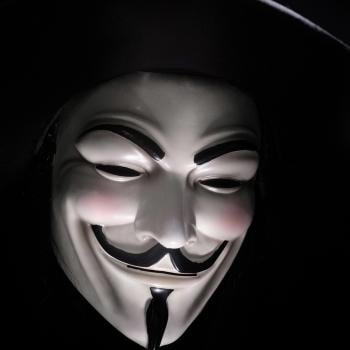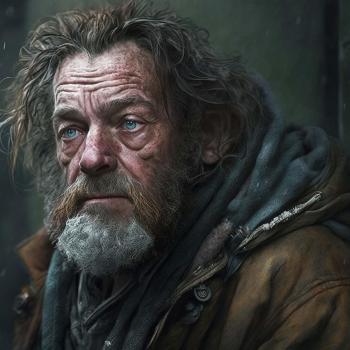I have been taking the long road toward answering the question, “Is there systemic racism in our country?”
As I noted in the last several posts, we cannot discuss the question of systemic racism today without considering the history of racial discrimination that has brought about the present circumstances.
In the last post, I pointed out that the systems of peonage and convict-leasing, which arose shortly after the emancipation of the slaves, for all intents and purposes resulted in the re-enslavement of many Blacks.
In this post, I wish to venture further into our racist past in order that we might have a platform for addressing questions of racial justice today.
The era of Jim Crow and forced segregation
In 1891, the Louisiana legislature enacted a series of laws imposing segregation upon the state. In 1892, Homer Plessy, a person of mixed race, deliberately violated one of those laws: the “Separate Car Act”: which required separate but equal rail cars for Whites and Blacks.
Plessy intentionally took a seat in a “whites only” railcar. He was arrested and charged.
In his defense, Plessy’s legal team argued that the law violated the equal Protection Clause of the Fourteenth Amendment. This clause forbids states from denying to “any person within their jurisdiction the equal protection of the laws.”
In 1896, the famed case of Plessy v Ferguson went to the US supreme court which ruled against Plessy by concluding that racial segregation laws did not violate the US Constitution as long as the facilities for each race were equal in quality.
This inaugurated a series of local and state ordinances that forced the segregation of Blacks from Whites and became known as the “Jim Crow” era.[1]
As a result of these laws, many of which remained in place as late as 1968, Blacks were marginalized in virtually every aspect of American life. They were denied the right to vote—even though the 15th amendment guaranteed them that right. They were consistently denied access to education, jobs, and many other opportunities that were afforded to Whites.
The Jim Crow era made life anything but equal for Blacks.
In 1954, the Supreme Court would agree. In the famed Brown v the Board of Education Chief Justice Earl Warren wrote, “We conclude that in the field of public education the doctrine of ‘separate but equal’ has no place. Separate educational facilities are inherently unequal.”[2]
The KKK, lynchings, and other extra-judicial killings of Blacks
It was during the Jim Crow era that the Ku Klux Klan came back into prominence. If separate but unequal did not make life difficult enough for Blacks, the era was marred by consistent violence against them:
Violence was on the rise, making danger a regular aspect of African American life. Black schools were vandalized and destroyed, and bands of violent White people attacked, tortured and lynched Black citizens in the night. Families were attacked and forced off their land all across the South.[3]
The era of lynchings and extra-judicial killings had begun.
From 1865 to the 1930’s,[4] thousands of Blacks were attacked by mobs of White men and hung. Sociologists Michael Emerson and Christian Smith note,
The Ku Klux Klan resurged and Black servicemen returning from World War I were even lynched while still in uniform.[5]
These lynchings occurred almost universally without recourse to a trial. Those who oversaw the lynchings were often civilians with no legal authority. And the murderers were rarely held accountable.
During the Jim Crow era, Whites could lynch Blacks with relative impunity.
White riots
An era of riots in American history had begun. These riots were led by Whites and characterized by violence against Blacks.
American history has been marred by violent protests by Whites against Blacks in order that the Whites might maintain the system of oppression that left them with tremendous power and privilege.
In fact, during the tenure of President Woodrow Wilson actions of violence against Blacks were ignored and to some extent even sponsored by the racism of the White House.[6]
Ida B Wells
During this time Ida B Wells, a young African American journalist, investigated the charges against many of those who were lynched. She found that the accusations of rape and criminal activities were almost always fabricated.
Unfounded or not, the climate of the day was such that a mere allegation against a Black itself was often enough to arouse the fury of southern Whites who rallied with more hangings and more lynchings.
One of the more famous of such occurred on Nov 10, 1898. In response to Well’s reporting, an estimated 600 White men in Wilmington, NC formed a mob and subsequently destroyed much of the property within the city and methodically killed virtually all of its Black leaders. Wells, however, managed to escape.
Tulsa Race Massacre
Perhaps the worst riot by Whites against Blacks occurred in Tulsa in 1921.
The Greenwood District of Tulsa was a community created intentionally for African Americans by the affluent African American O.W. Gurley. The success of many African Americans in the Greenwood District, which came to be known as the Black Wall Street, led a cavalcade of Whites into the city.
The resultant riot, known as “The Tulsa Race Massacre” is considered one of America’s worst acts of domestic terrorism.
From May 31-June 1, 1921, over a period of 18 hours, White rioters destroyed thirty-five city blocks, killed several hundred, injured more than 800, and left more than 9,000 homeless.[7]
Kimberly Fain, reporting on the Tulsa riots, affirms that violence against African Americans was a part of the social fabric in America,
The Tulsa World newspaper inflamed the tensions between blacks and whites by suggesting that the Ku Klux Klan could ‘restore order in the community.’ Since the KKK asserted white superiority with terroristic acts, such as lynchings, the mere suggestion from a mainstream newspaper that the KKK should intervene demonstrates how white supremacy was not only legitimized but also promoted with legal impunity.[8]
Civil War
American history has been marred by the violence of Whites against Blacks. The Civil War itself, a war predicated on keeping Blacks in a state of subservience, resulted in an estimated 600,000 deaths.[9] Thus, making the Civil War not only the costliest war in American history but one that is responsible for more deaths than all the other US wars combined.
I wish this were all there was to say about America’s racist past.
To be continued . . .
NB: Am I saying that America is a bad country? No! I am simply saying that America is a country with a violent and racist past.
If you have been blessed by this blog post and would like to see others benefit too, would you please consider giving a tax-deductible contribution to support determinetruth ministries and make possible future posts like this? You may give a tax-deductible gift by following this link.
Good news: If you wish to view this blog on your smartphone through the Determinetruth app simply download the “tithe.ly church” app on your smartphone and insert “determinetruth” as the church name you wish to follow. Once it is loaded, simply click on the “blog” icon and they will automatically load.
If you would like to have Rob speak at your church or organization in person or via zoom, please let us know by filling out the contact info on the Contact me tab on this site.
If you would like to share your story, or if you have questions that you would like addressed in future posts, you may submit them in the Contact me tab on this site.
[1] Jim Crow was the name of a Black minstrel show character.
[2] Tisby, Jemar. The Color of Compromise (pp. 132-133). Zondervan. Kindle Edition.
[3] https://www.history.com/topics/early-20th-century-us/jim-crow-laws. Last accessed 9-25-20.
[4] Officially the last lynching occurred in 1981. This fact can be disputed. At the time of writing of part of this essay, there have been several instances of the hanging of Blacks in Southern California. Though officially ruled a “suicide,” the hanging of a Black man near a public library makes one seriously question the veracity of the official declaration of suicide. See: https://www.nytimes.com/2020/06/19/us/hanging-deaths-california.html. Last accessed 9-25-20.
[5] See Divided by Faith (p. 42). Oxford University Press. Kindle Edition.
[6] Wilson’s racist legacy is chronicled by an article in the Atlantic: https://www.theatlantic.com/politics/archive/2015/11/wilson-legacy-racism/417549/. Last accessed 10-4-21.
[7] See: Tulsa Race Riot: A Report by the Oklahoma Commission to Study the Race Riot of 1921, (2001); James Hirsch, Riot and Remembrance: America’s Worst Race Riot and Its Legacy, Mariner Books, 2003; Hannibal Johnson, Black Wall Street: From Riot to Renaissance in Tulsa’s Historic Greenwood District, Eakin Press, 2007.
[8] Kimberly Fain, “The Devastation of Black Wall Street” JSTOR, July 2017. https://daily.jstor.org/the-devastation-of-black-wall-street/. Last accessed 9-26-20.
[9] The number is unknown because there are no authoritative numbers relating to the Confederate side. See: https://www.history.com/news/civil-war-deadlier-than-previously-thought. Last accessed 9-25-20.












